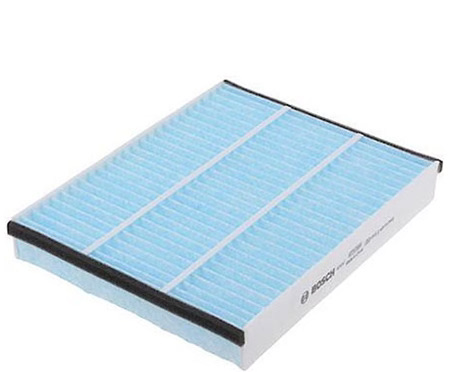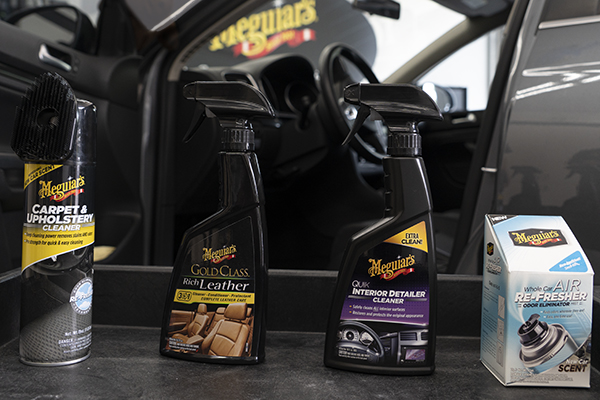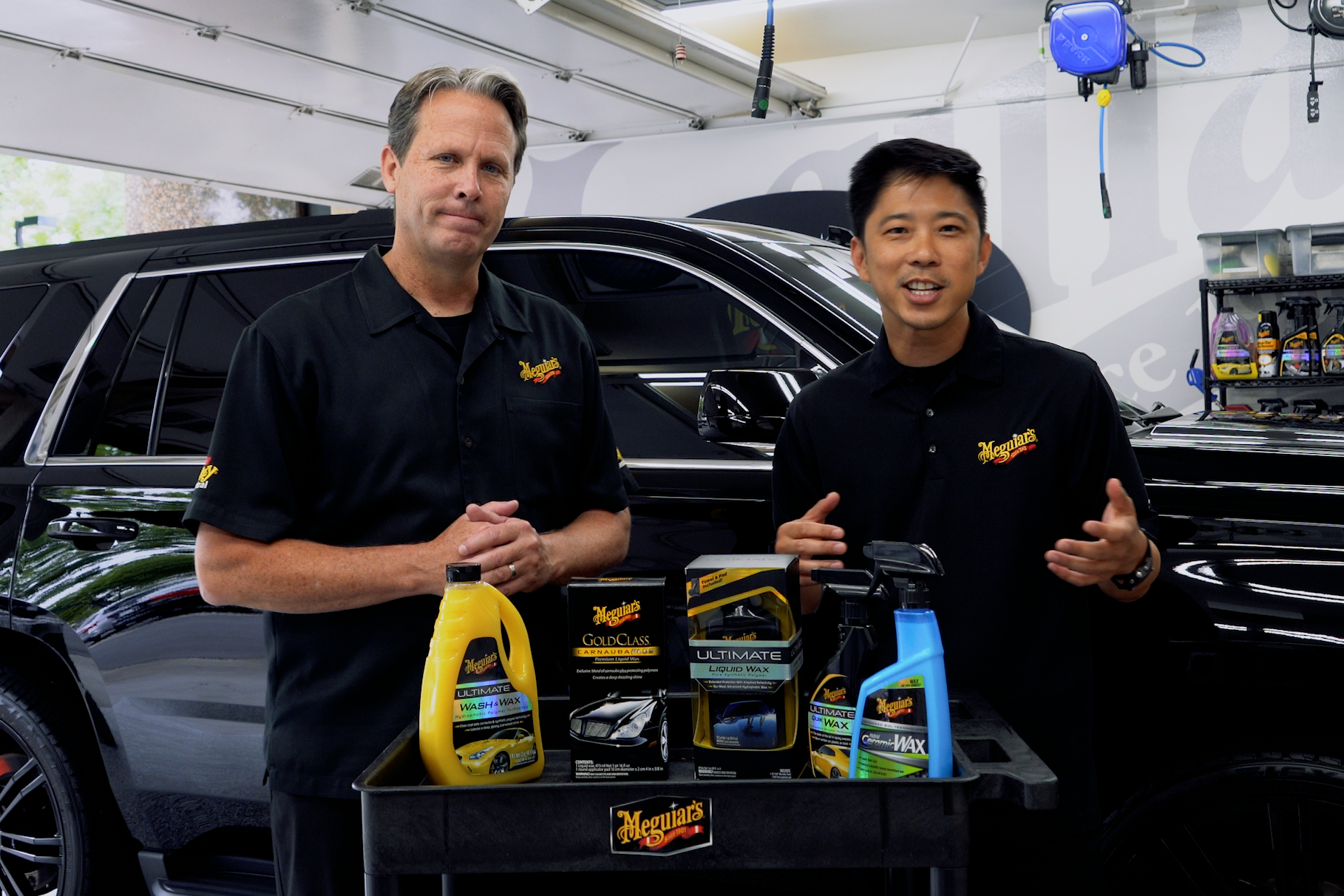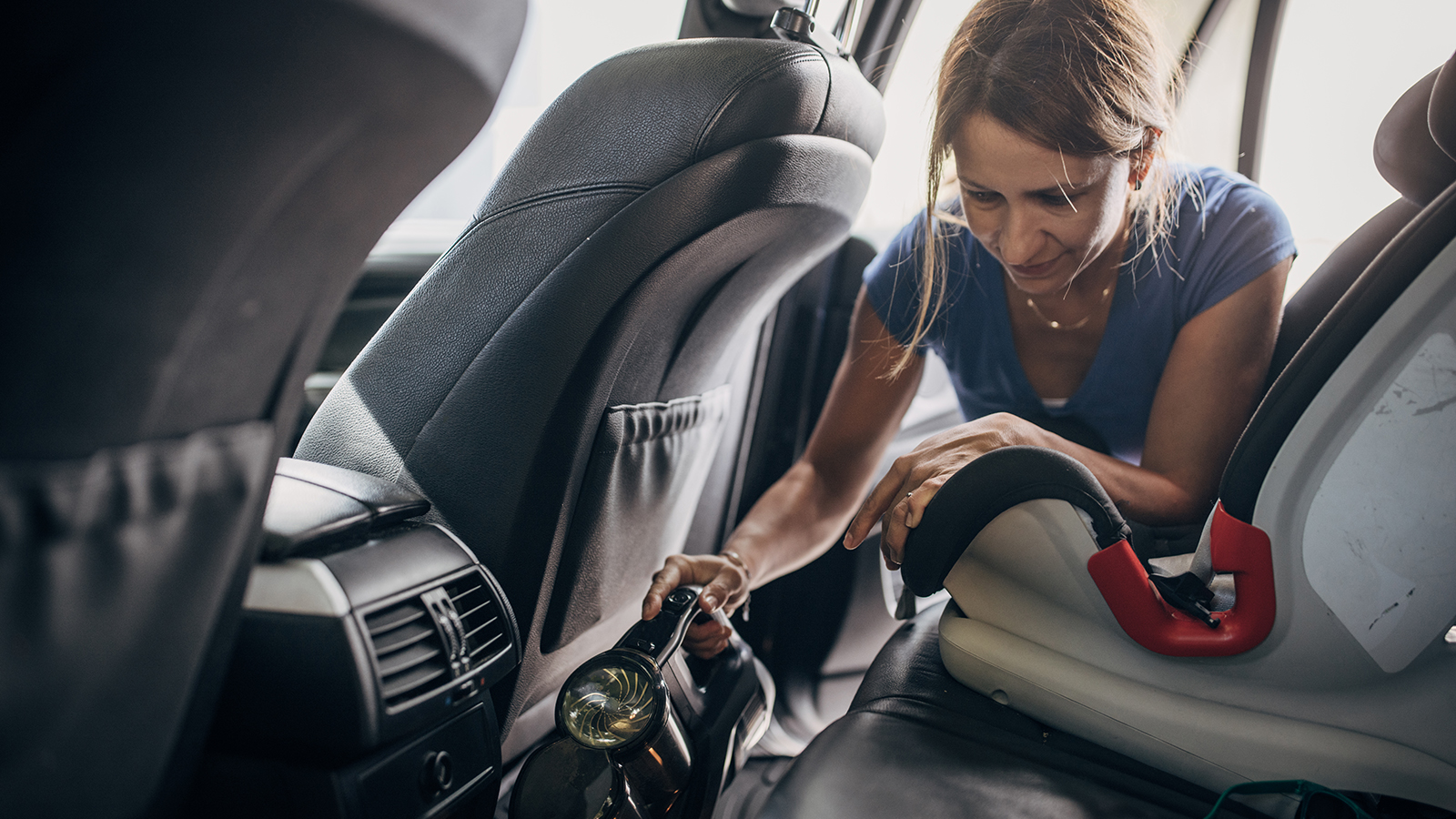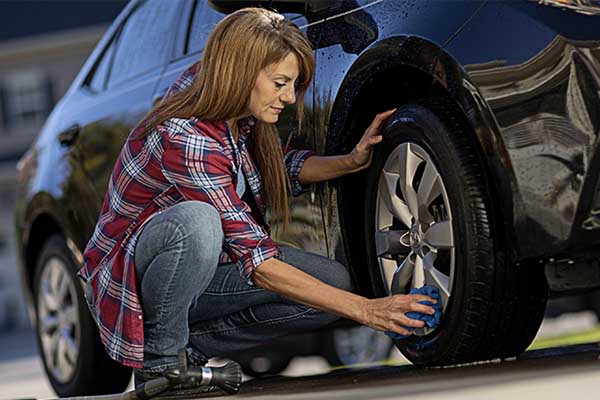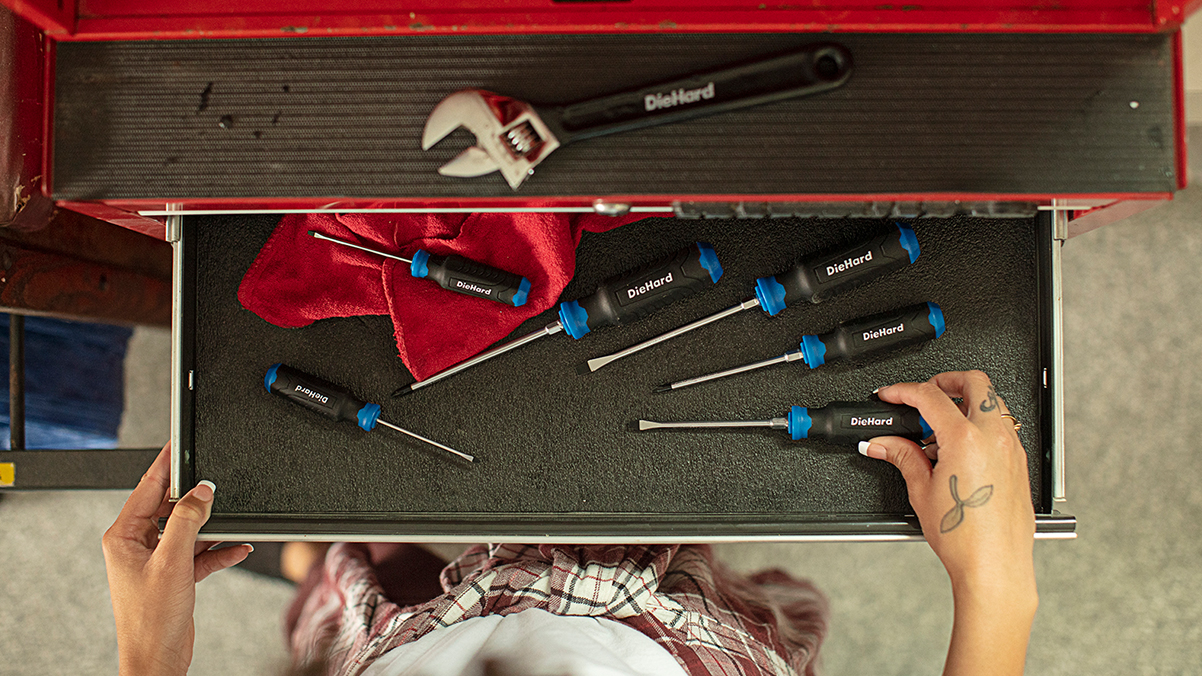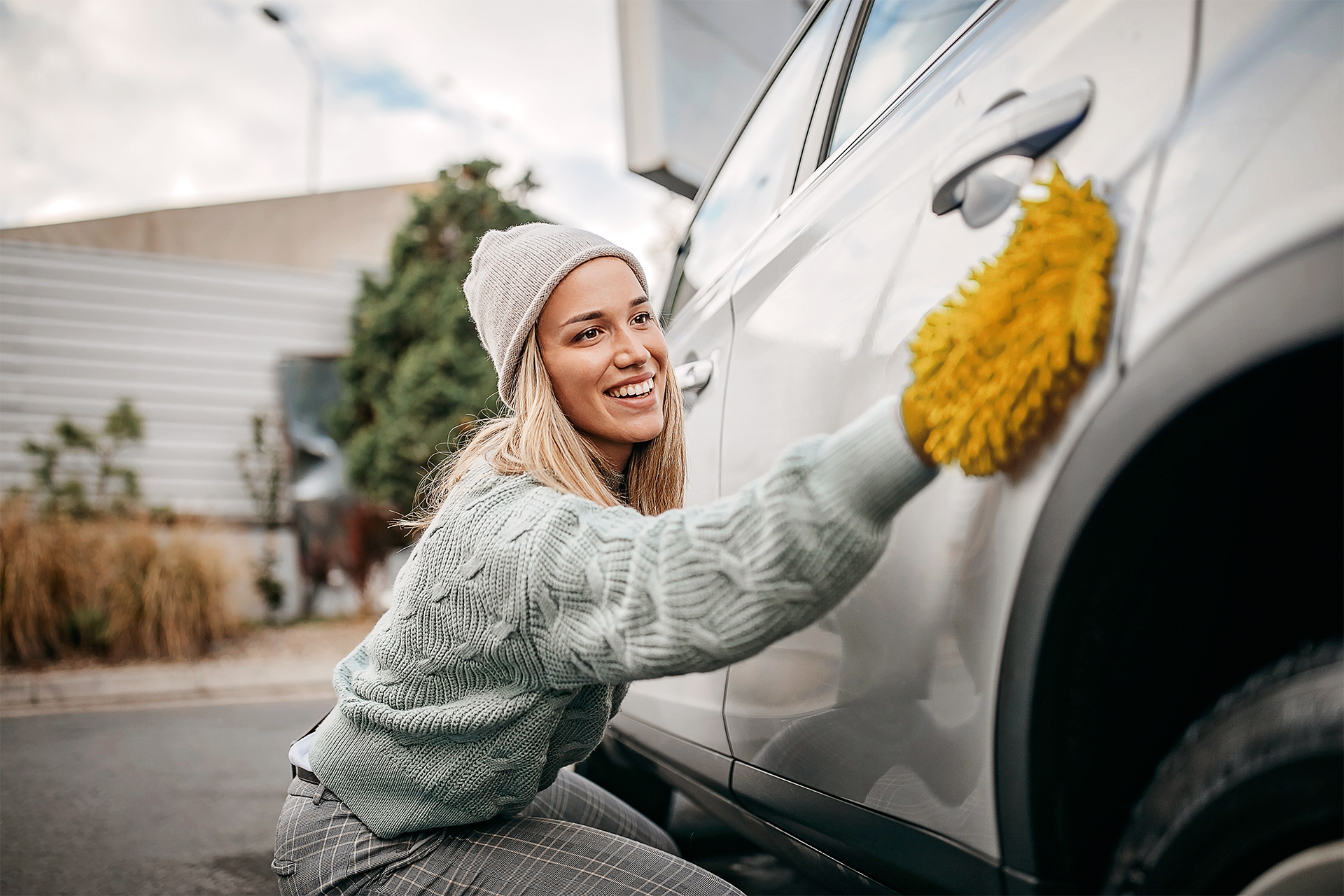Your vehicle is your connection to the outside world. You use it to drop the kids off at school, get groceries, and meet up for social gatherings. Unfortunately, that outside world also invites contact with unwanted things like dirt, germs, and bacteria. What you need are science-backed ways to clean and disinfect your family hauler or professional vehicle. This gives you, your passengers and your crew peace of mind when you do go out and about. Whether you're looking to clean your kid's half-eaten candy out of the seat or you want to prevent the spread of germs, here's how to sanitize your vehicle at home.

“Touchy" Subject
High-touch surfaces see a lot of hands and are most likely to be covered in germs and bacteria. While the entire outside of your ride might be filthy after off-roading, you don't have to disinfect the entire vehicle, just those high-touch areas. Usually this is stuff like ATMs, gas nozzles, and door handles, but on your vehicle, think of the exterior door handles and trunk pull.
When it comes to disinfecting surfaces, some people immediately think of isopropyl (rubbing) alcohol. Alcohol is great at cleaning a wound, but terrible for cleaning paint. If your exterior door handles are painted, skip the alcohol. Hand sanitizers are generally around 70% alcohol, which makes them too strong for painted surfaces. On the other hand, if you have unpainted plastic or metal door handles, those can stand up to alcohol's cleaning power. Just wipe onto the surface with a microfiber cloth and let dry. This is obviously a less than ideal solution, so here's a better idea.
Your average carwash soap is designed for this job. In fact, a newsletter published by Harvard Medical School stated that soap and water are more effective than alcohol-based sanitizers at cleaning visibly dirty surfaces. A pressure washer with a foam cannon attachment is overkill, unless you're going for an over all clean. You don't have to go all-out with car show prep, but follow an average detailing regimen if you're worried about exterior cleanliness.
Shared Seating = Potentially Gross
Pressure washers are great, but you can't use them on the inside of your ride, unless it's a Wrangler. You'll need to take a different approach to cleaning a vehicle's interior. If you drive for a rideshare service like Uber, odds are you've had passengers sneezing (or worse) in the back of your ride. That's gross, but upholstery can be cleaned up, too.
Your best bet for interior carpet and upholstery cleaners are called surfactants. These are chemical compounds that lower the tension between the solid carpet/upholstery and the liquid spill. Surfactants are effective cleaners because they can act as detergents (combines with impurities to make them water soluble), emulsifiers (a solvent suspended in cleaning fluid), foaming agents (pushes the cleaning agent below the surface), and dispersants (improves separation of particles). You're probably more familiar with these around the house, with brand names like Oxi-Clean. The instructions vary by the brand, but it's typical to spray on the affected area, brush into the carpet and let it sit a few minutes to work, and just wipe up.
On other interior surfaces, like plastic trim, switches, the steering wheel and navigation system, use a general interior cleaner to clean any surface. Just spray, and wipe with a shop towel or microfiber cloth. An alternative is interior cleaning wipes, which are basically a disposable cloth loaded with interior safe detergents.
To disinfect as well as clean your vehicle's interior, you can also go with a couple of products you probably already have around the house. While isopropyl alcohol may not be great on paints, it is a safe option to disinfect interior surfaces like plastics and imitation leather. And remember, soap and water are CDC-approved methods of disinfecting vehicle interiors, too. Laundry detergent with water can be used on fabrics, although you want to use both sparingly, avoiding too much sudsy mess as well as soaking seats, which could lead to a musty odor due to the moisture.
Leather is a bit different, with your bovine seats wanting some extra attention. You can clean leather with a simple solution of one part water to one part white vinegar. Note that vinegar is not a CDC-approved method of disinfecting. For general cleaning, though, you simply apply and wipe off, then apply a leather cleaner and conditioner for long lasting protection.
Bleaching agents make for great household cleaners, like hydrogen peroxide, but while it worked for your '90s haircuts it doesn't work for your car's interior. Hydrogen peroxide, or straight up bleach, is effective at killing viruses and bacteria, but will also stain, color change, or damage interior fabrics and plastics. Use the products designed for the job.
Clean the Cabin Air
Your average paper cabin air filter works well, removing dirt, soot, and other particles from the air. A HEPA (High-Efficiency Particulate Air) filter is made of glass and plastic fibers in a binder that are effective in removing very fine particles like dust and pollen from the air. HEPA filters can handle 99.97% of particles 0.3 microns or larger, the same size as many bacteria and allergens. Filtering down to 0.3 microns is the same filtration level as a N95 surgical mask. Viruses are much smaller, but NASA said HEPA filters are nearly 100% effective against viruses due to a complex process called diffusion. If it's time to change your cabin air filter, get the upgraded one.
Extra Tips
If someone was ill in your vehicle, wear nitrile gloves while cleaning. Paint respirator masks are also 99.9+% effective at removing anything out of the air, to the point that you won't even be able to smell anything while wearing one. Don't forget the vacuum, as it can quickly and easily remove dirt and other filthiness. Finally, for a fresh finishing touch, you can use an air purifying product like Ozium. This glycol-ized aerosol hangs in the air for several minutes after spraying, absorbing odor instead of simply masking it.
Are you a professional driver? Let us know how you keep your ride clean in the comments below.

